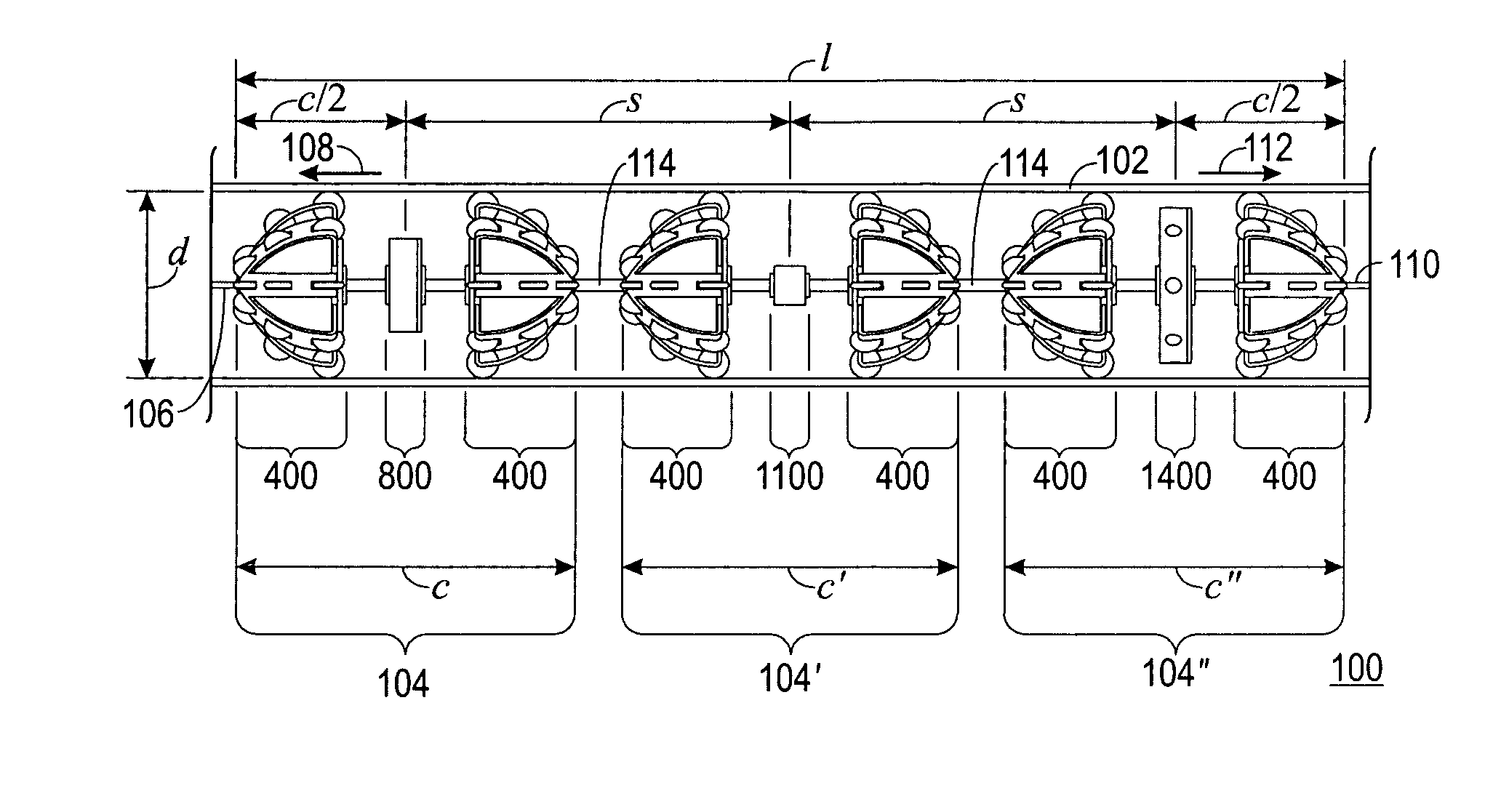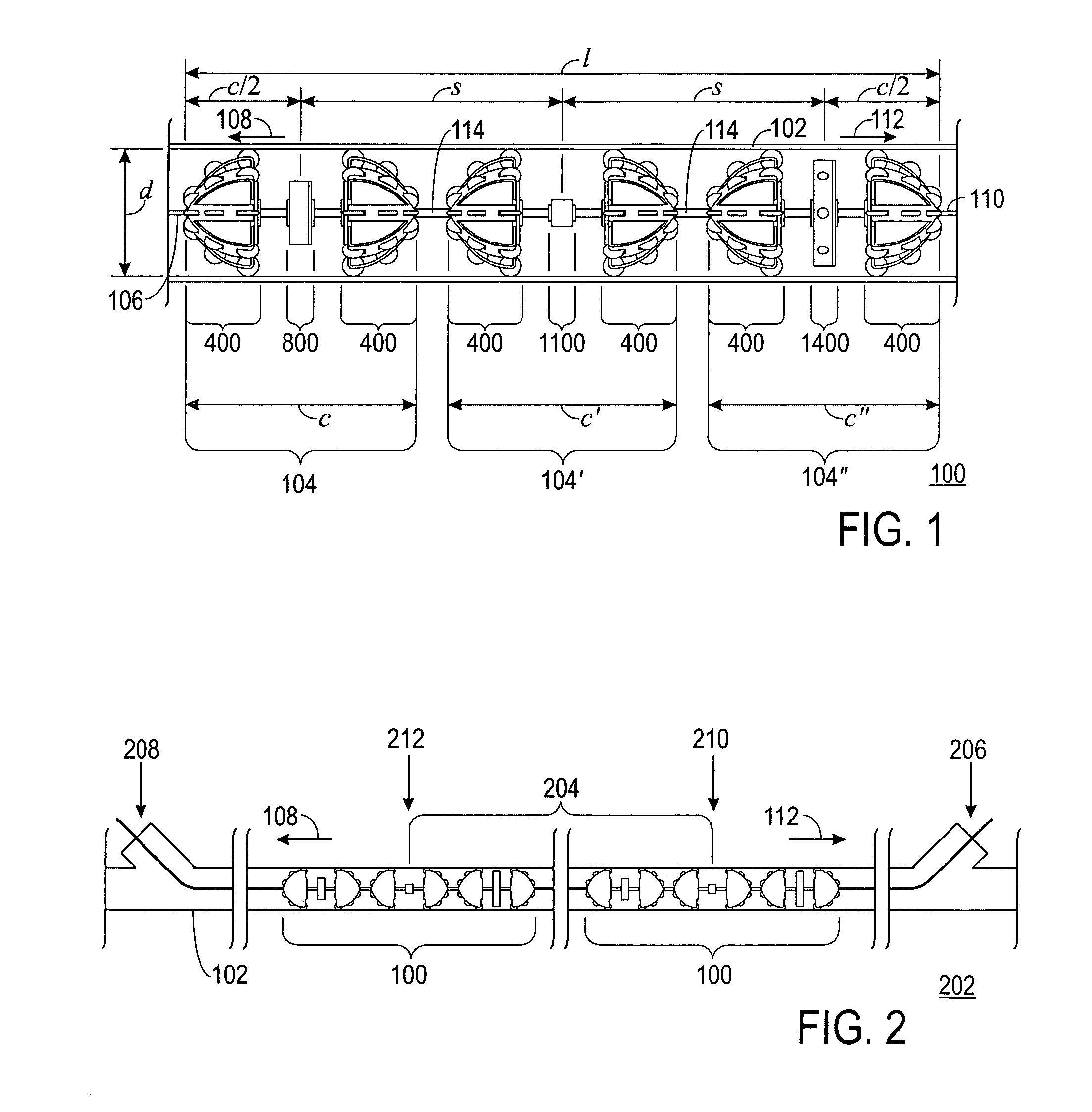Pipe-inspection system
a technology of inspection system and pipe, applied in the direction of diagnostic recording/measuring, instruments, mechanical equipment, etc., can solve the problems of pipeline failure, pipeline flaws, lost services and revenues, etc., to reduce friction within the pipeline, avoid damage, and negotiate bends and junctions. , the effect of reducing friction
- Summary
- Abstract
- Description
- Claims
- Application Information
AI Technical Summary
Benefits of technology
Problems solved by technology
Method used
Image
Examples
Embodiment Construction
[0051]Throughout this discussion, items are assigned three- or four-digit reference numbers whose first digit (if three-digit) or first two digits (if four digit) reflect the Figure in which the item first appears. That is, items first appearing in FIG. 1 are assigned reference numbers between 100 and 199, etc. Once assigned, a given reference number is used in all Figures in which that item appears.
[0052]FIG. 1 shows a side view of a pipe-inspection system 100 in use within a pipeline 102, FIG. 2 shows a side view of a portion 202 of pipeline 102 in which pipe-inspection system 100 is in use, and FIG. 3 shows a block diagram depicting a process 300 for operation of pipe-inspection system 100 in accordance with a preferred embodiment of the present invention. The following discussion refers to FIGS. 1 through 3.
[0053]Pipe-inspection system 100 is made up of a transmission cluster 104 and a reception cluster 104″. System 100 may also contain one or more intermediate clusters 104′ bet...
PUM
 Login to View More
Login to View More Abstract
Description
Claims
Application Information
 Login to View More
Login to View More - R&D
- Intellectual Property
- Life Sciences
- Materials
- Tech Scout
- Unparalleled Data Quality
- Higher Quality Content
- 60% Fewer Hallucinations
Browse by: Latest US Patents, China's latest patents, Technical Efficacy Thesaurus, Application Domain, Technology Topic, Popular Technical Reports.
© 2025 PatSnap. All rights reserved.Legal|Privacy policy|Modern Slavery Act Transparency Statement|Sitemap|About US| Contact US: help@patsnap.com



